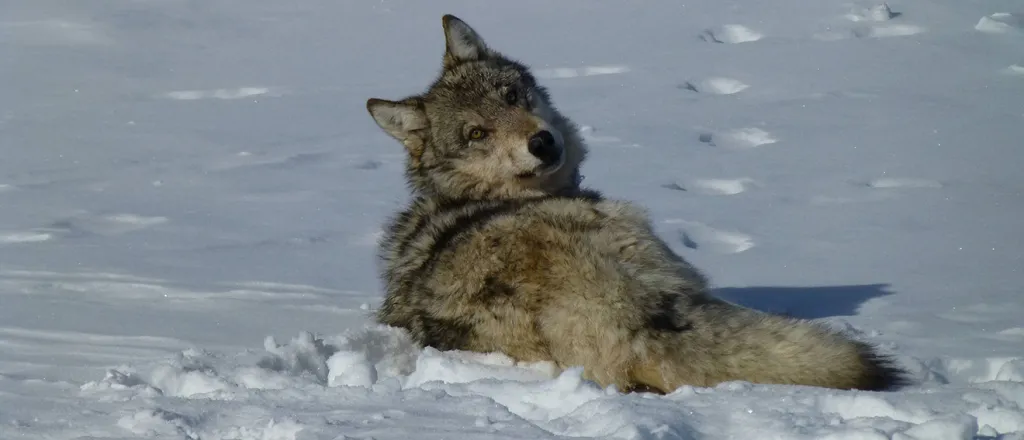
Outdoor sporting groups appeal federal court ruling on gray wolf protections
A coalition of outdoor sporting groups intend to appeal the decision of a federal judge in Montana made earlier this week that directed the federal government to reconsider whether gray wolves in the Rocky Mountains require additional protections under the Endangered Species Act.
The Sportsmen’s Alliance Foundation, Safari Club International and the Rocky Mountain Elk Foundation on Wednesday submitted their notice to appeal the decision of U.S. District Court Judge Donald Molloy of Montana to the Ninth Circuit Court of Appeals.
“This ruling is the latest string of nonstop litigation by environmental groups seeking to frustrate the original intent of the ESA, which is to recover endangered species and return them to state-based management, not keep them perpetually listed and under the authority of the federal government,” Rocky Mountain Elk Foundation President and CEO Kyle Weaver said in a press release. “Whether it’s the wolf or the grizzly bear, once an animal receives ESA protections, it becomes nearly impossible to remove them, even if populations meet recovery criteria over an extended period of time. The ESA needs an adjustment to renew its focus on real species recovery.”

In Tuesday’s ruling, Molloy vacated a 2024 determination made by the U.S. Fish and Wildlife Service that gray wolves in the western United States do not need increased federal protections.
Currently, gray wolves are listed as an endangered species in the contiguous 48 states, except in the Northern Rockies — Idaho, Montana, Wyoming and parts of Oregon and Washington — after management of the species in those regions was given over to the states following Congressional action in 2011.
A coalition of more than 70 environmental and conservation organizations submitted a petition to the federal government in 2021, asking FWS to relist gray wolves in the Northern Rockies, or create a western Distinct Population Segment, or DPS, for the species with added protections.
The coalition argued in its petition, and subsequent lawsuit following FWS’s determination against added protections, that due to concerns that states are using inadequate scientific methods to assess population statistics, harsh political rhetoric and increased mandates in Montana and Idaho to reduce wolf populations, and because wolves do not inhabit the full extent of their historic range — which once broadly comprised the entire western U.S — the species meets the criteria for reconsideration under the ESA.
“Management of Canis lupus must not be by a political yo-yo process,” Molloy wrote, adding that the federal government had “failed to use the best available science” in its species analysis.
Molloy’s ruling requires FWS to reevaluate whether gray wolves should receive increased federal protections.

© iStock - Golfcuk.
While members of the conservation coalition praised Tuesday’s decision, officials in Montana, which joined the lawsuit as an intervenor-defendant, and Idaho, which filed an amicus brief on behalf of the federal government, disagreed with the ruling by an “activist judge.”
“Montana has a healthy, sustainable population of wolves. While we are reviewing the decision, it will not implicate our state’s management efforts or our wolf season,” said Kaitlin Price, a spokesperson for Gov. Greg Gianforte’s office. “Unfortunately, we’re not surprised to see another activist decision in favor of environmental extremists.”
Price said that if FWS appeals the decision, Montana Fish, Wildlife and Parks “will be there to support them.”
Price could not be reached before publication about whether the state and FWP would sign on to the current notice of appeal.
“We’re extremely disappointed with the decision considering Idaho has managed a wolf population above federal recovery goals for decades and sustained more-than-adequate wolf populations since Congress removed them from Endangered Species Act protection in 2011,” Idaho Fish and Game Director Jim Fredericks told the Idaho Capital Sun in a written statement.
Molloy’s ruling does not currently change the status of gray wolves, which are managed by each state’s respective wildlife agency.
In Montana, where gray wolves number approximately 1,100, FWP has proposed new hunting and trapping regulations for the upcoming wolf season that would set a statewide quota of 500 animals — up from 334 in 2024 — and would significantly increase bag limits allowing hunters and trappers to kill up to 15 wolves on a single hunting or trapping license, for up to 30 total wolves.
Arguments from the coalition in support of its appeal are expected to be filed soon, according to Rocky Mountain Elk Foundation staff.
“We had to appeal this decision,” Michael Jean, litigation counsel for Sportsmen’s Alliance Foundation, said in a press statement. “This decision seems to hold that unless a species is not recovered across its entire historical range, then it has to stay listed — regardless of thriving populations. It’s difficult to see how the wolf, or other listed species, will ever be deemed recovered under that standard.”

















